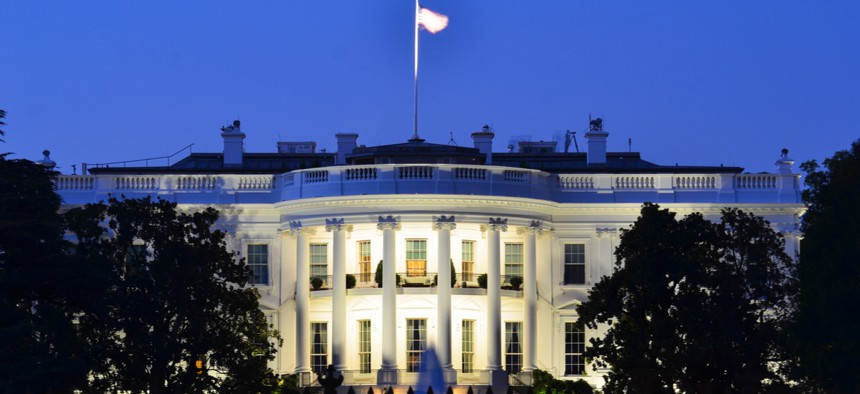What Trump’s Budget Says About the Administration’s IT Priorities

Orhan Cam/Shutterstock.com
The president’s budget proposal is more about priorities than actual funding. So what does it tell us?
Be prepared to invest more in IT operations than research, federal technology experts said after reviewing President Donald Trump’s 2019 budget proposal.
The budget documents released Monday propose a half-percent increase in civilian agency spending on IT in 2019. But while some programs and initiatives would get more money, others would see their staff and resources slashed.
The president’s budget is far from a done deal—Congress handles appropriations and isn’t required to look at the president’s suggestions—but it does give an idea of the administration’s priorities.
For instance, Chris Wiedemann, market intelligence senior analyst at immixGroup, pointed to the call outs to several ongoing IT initiatives through funding for the Centers of Excellence housed within the General Services Administration.
“Cloud, data center consolidation, call centers—which we’ve heard about but, again, seeing it in the budget, I think, is significant,” he said. “We had heard rumors of [a call center Center of Excellence]. It’s the kind of thing you hear discussed at conferences. But it’s significant to see it put on paper like this.”
Adam Hughes, director of marketing and communications for Grant Thornton Public Sector, thought it was strange the administration decided to remove approximately $9 million in grant funding from the IT total but suggested this might signal support for the GREAT Act , legislation currently before Congress that would create a standard system for how data on federal grants is recorded.
“It’s kind of like the DATA Act, but for grants management, to try and really make sure we’re comparing apples to apples,” Hughes explained. “I don’t know if that’s why [grant funding for IT was removed], but I saw it as a kind of homage in a budget document.”
Bradley Saull, vice president of civilian agencies at the Professional Services Council, noted another aspect of the GSA budget: funding for the Technology Modernization Fund, $210 million to be used to kick-start large, critical IT modernization efforts. Though less than the $250 million requested last year, it’s something.
“It’s a start and [makes] individual departments and agencies present that business case and maybe some healthy competition among other programs and needs across the government to fully make the case why additional modernization funds for their agency would be beneficial,” Saull said. “The IT modernization fund is a down-payment on a lot of the broader needs that the government has.”
Saull also said he was heartened to see significant funding for Veterans Affairs’ electronic health records overhaul, plus an additional $381 million for upgrading legacy systems.
“The budget notes that IT is ‘the backbone of how government serves the public in ways that meet their expectations and keep sensitive data and systems secure,’” Saull said. “We couldn’t agree more.”
Hughes said he was surprised to see the administration call out some of these fundamental technologies, such as email and collaboration tools.
“I think that’s important,” he said. “They talked about lack of video conferencing, a lack of collaborative online tools that make use of new technologies—not even new technologies anymore—like cloud environments. … Based on my time in government, that is a huge hurdle.”
The most surprising part of the budget proposal for Wiedemann was the reduction to science and technology research staff at the National Institute for Standards and Technology.
“Given the amount of public priority—or public emphasis—we’ve seen on security, I was a little bit surprised that any group, even tangentially related to cybersecurity spending was being targeted for cuts,” Wiedemann said. “It’s not as though they had taken a background role, even temporarily. They’re in the middle of some fairly significant work on their end, so, again, I was a little bit surprised by that.”
How much of this survives Congress remains to be seen. As a rule of thumb, Wiedemann suggested most increases in the budget proposal have a better chance of surviving than the cuts.
“I lean toward the requested increases in here being much likelier to get through Congress than the requested decreases. You look at the agencies that come out significantly ahead here: obviously the Defense Department, and on the non-defense side, DHS in some areas, but big increases in investment in VA and there’s a significant requested increase at the Census Bureau for the 2020 count. I think there’s a fair amount of political will behind both of those things,” he said.
Conversely, Wiedemann said he would be surprised if the double-digit reductions at agencies like State, Agriculture and EPA made it through the appropriations process.
“The other specific numbers that are found in different department and agency budgets as it relates to IT—whether it’s cyber, legacy systems sustainment or future modernization efforts—there’s a commitment to creating a healthy IT market that gets the government needs fulfilled,” Saull said.



